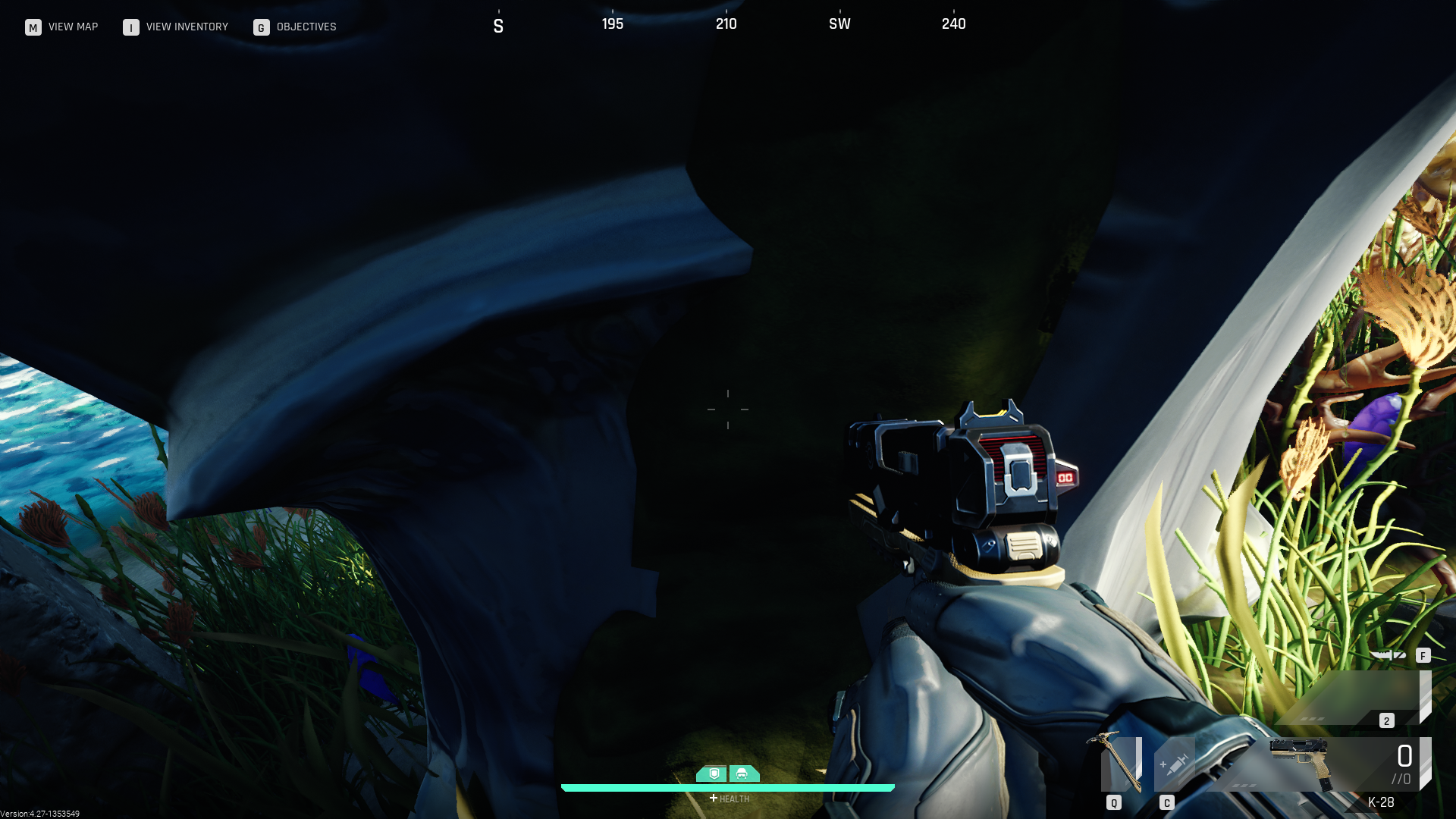See, without a dedicated benchmarking tool, running these kinds of tests requires a certain controllable environment, where variables are known and parameters can be reset in a click. This is not the case for The Cycle: Frontier, whose environment is usually trying to fucking kill you, particularly though the unavoidable presence of other players. I’ve never sat down to record some average FPS values only to spend half my time cowering behind a tree, fearful of being shot, robbed and – worst of all – forced to start work over again. If you haven’t read Ed’s preview, The Cycle: Frontier is a kind of sci-fi hybrid of Hunt: Showdown and Escape From Tarkov. You orbital drop onto an mining planet well past its prime, set about gathering resources, then book it to a randomly selected extraction point for your ship ride home. Raising the stakes are the local, clearly upset fauna, rival player-controlled prospectors, the loss of all your carried loot and gear upon death, and the unpredictability that comes with not knowing where you’ll touch down or where you’ll need to escape. All of these, it turns out, also make Frontier a benchmarker’s nightmare. Test runs need to be repeatable, so I had to record them all by making the same moves in the same area, but death at the hands of players or roaming wildlife meant having to re-deploy on potentially the other side of the map - before hoofing it back at the game’s weirdly sluggish sprinting speed. A pain in the arse as well as the feet. An almost evolutionary disinclination towards losing my gear also meant dropping in with as little as possible, only to realise later I was scuppering my ability to defend myself. And the map’s free-roaming nature left it devoid of truly safe spots to conduct my tests in peace, the only ‘quiet’ areas being featureless fields and shores that wouldn’t accurately reflect the technical strain of more detailed locales. It quickly became apparent that I’d just have to run around this wide-open multiplayer battle arena and hope… no-one notices? I’d willingly surrendered my ability to fight effectively against enemy prospectors and even if I survived the initial encounter, a noisy gunfight would likely attract others, so stealth became the only option. Upon the sound of approaching footsteps, I’d kill the test and shrink into the nearest shrub, waiting – sometimes watching – for the interloper to move on. Thus, much of my investigation into Frontier’s lush, otherworldly graphics ended up looking like this: Such encounters happened far more times than I cared for, and I was so sure I’d locked eyes with one man that I didn’t so much retreat behind my tree trunk as I did slump against it and wait to die. But no – the footsteps got heavier, the clanking of his far superior kit got louder, but in moments he’d marched straight past the tree and disappeared over a nearby cliff. Another close call broke out into a full-on gun battle, but I wasn’t a combatant. Mere feet away, two prospectors had bumped into each other before bumping into me, and fought it out while I trembled in a nearby rock crevice, frozen to the point I didn’t even consider third-partying the survivor. I later recounted these moments to Ollie, who suggested using voice chat to identify myself as friendly – not entirely untrue, as I was seriously only there for the science, not anyone else’s loot. But then I’ve also played enough DayZ to know that “Friendly!” can be too easily mistranslated as “Hello, I have made it trivially easy to kill me and yoink my stuff.” What these kinds of multiplayer games need, I think, is a big blue “PRESS” jacket skin that peaceful hacks like me can wear while on fact-finding missions inside hostile deathmatches. Would-be killers would know not to waste their bullets, lest they face a war crimes investigation, and I could run benchmarks without fretting over a sudden, unprovoked perishing.
